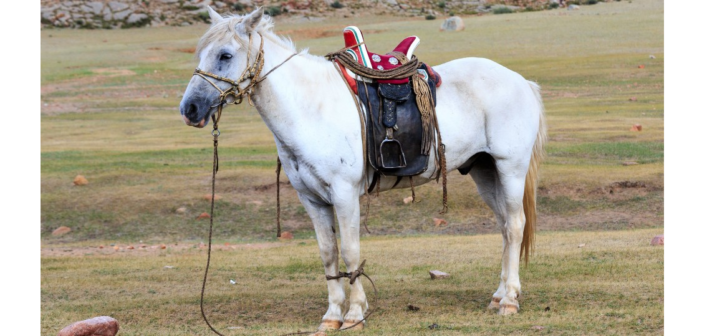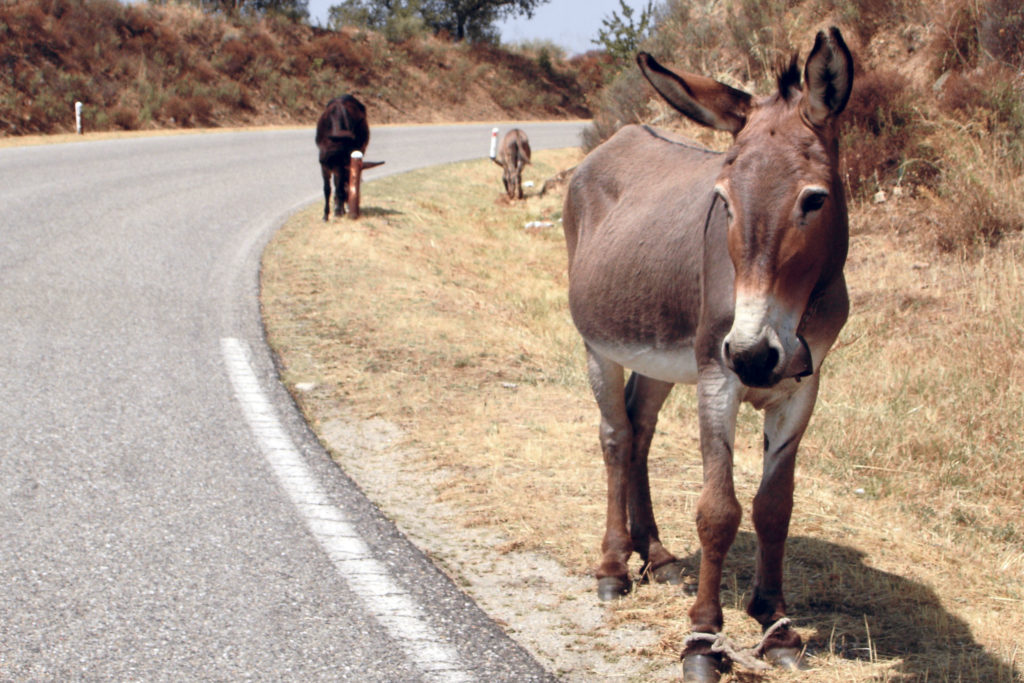Hobbling is the practice by which an animal, normally an equine, has their limbs tied together to restrict their movement. This method of restraint is very old and quite common in some areas, including rural Greece. Hobbling can restrict movement to the point that the animal is unable to lie down, run, or even walk comfortably, and can cause injury and distress.
Unfortunately, in Greece, hobbling is considered a traditional custom, so there is a demand for it to be preserved. This issue has previously been addressed by administrative officers of ministries and other authorities who are not experts on the matter, who had the opinion that hobbled animals can be adapted to a life of abuse, and that the practice is not an animal welfare violation.

A camel is hobbled in Morocco. This practice is used to immobilize a variety of animals in a variety of places. Image credit Graeme Churchard, CC BY-SA 3.0.
As it is known, there is a significant difference between uninformed belief and scientific fact, so Panhellenic Animal Welfare and Environmental Federation (PFPO) decided to request the opinion of two top scientists on whether hobbling animals constitutes a form of animal abuse.
We requested the opinions of Professors Lysimachos Papazoglou and Nikolaos Diakakis, from the Department of Clinical Surgery of the School of Veterinary Medicine at Aristotle University of Thessaloniki in Greece. Both Papazoglou and Diakakis are well-known worldwide in their field, and their opinions are based on accumulated experience and expertise. Below you will find their opinion on hobbling:
“It is obvious that this is an unacceptable, inhumane and torturous method. The front right limb of an equine is anatomically related to the back left limb. This means that when an equine moves the front right limb and the back left limb move simultaneously. The aim of hobbling is the animal’s immobilization. It is clear that hobbled equines are in a stressful situation, as they are not able to move. For this reason, this method should be abolished. The stressful situation worsens when the animal sits on the ground, because then they can not stand up.
Apart from the stress, this method is used on animals who are in places without shelter and structures of food and water supply. In many cases, equines are abandoned in the middle of a field without food and water, or at most there is a bucket of water on the edge of the field. However, it should be mentioned that each movement is quite painful. So, those animals are commonly undernourished and dehydrated because it is quite painful to reach the edge of the field.
Things only worsen during the summer season, due to high temperatures. It should be pointed out that equines are quite sensitive to hyperthermia, or overheating, so they are in great danger whenever temperatures exceed 32-33 degrees Celsius [~90 degrees Fahrenheit]. Due to dehydration and the lack of shelter, many animals suffer from severe health issues such as exhaustion, acute kidney failure and colic.
As hobbling is a form of immobilization, many equines make efforts to escape. Apart from being in stress during these efforts, they often sustain extensive and serious injuries, such as septic arthritis or septic tenosynovitis [inflammation of a tendon and its sheath], which put equines’ lives in danger.
Finally, equines are fast in order to defend themselves against carnivores. A hobbled animal who is abandoned in distant and isolated places is often sacrificed to carnivorous animals. In fact, there have been a number of cases where hobbled equines who were not able to escape or defend themselves died painful deaths as packs of stray dogs or other carnivorous animals ate them alive.
For all the above reasons, we believe that hobbling constitutes an unacceptable, obsolete and cruel method of immobilization, which should be prohibited.”
The above comment was provided by Nikolaos Diakakis, Associate Professor of Equine Surgery, and Lysimachos Papazoglou, Professor of Equine Surgery, both from the Department of Veterinary Medicine at Aristotle University of Thessaloniki.
Featured image: a hobbled horse in Mongolia. Image credit Alan Fieldus, CC BY-SA 3.0.






